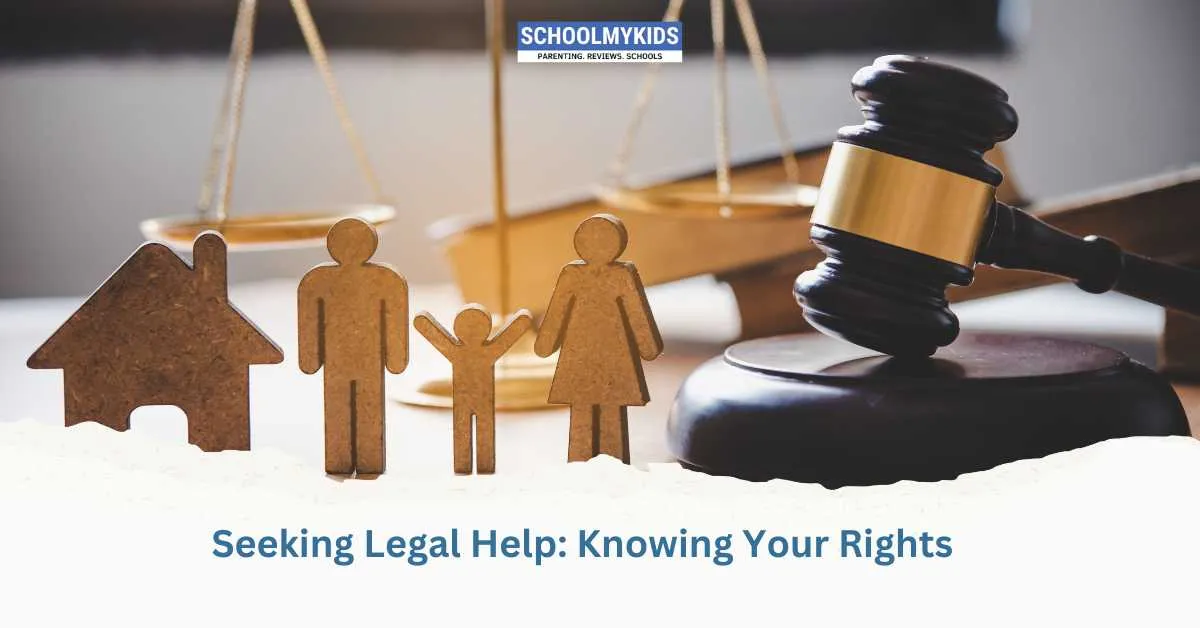Navigating the legal landscape surrounding bullying and other related issues can feel overwhelming for parents and caregivers. However, knowing your rights and understanding the legal protections available is essential in ensuring that your child’s safety and well-being are upheld. This article explores the importance of legal awareness, the resources available to families, and practical steps to take when considering legal action.
Understanding Your Legal Rights
Legal rights in the context of bullying are designed to protect children and guarantee that schools and other institutions provide safe and inclusive environments. These rights are supported by a combination of federal, state, and local laws.
Federal Protections
Several federal laws serve as the backbone for protecting students:
- Title IX of the Education Amendments of 1972: Originally established to prevent sex-based discrimination in education, Title IX has been extended to address harassment and bullying related to gender, sexual orientation, or gender identity.
- The Individuals with Disabilities Education Act (IDEA): This law mandates that students with disabilities receive free appropriate public education in a safe environment. Bullying based on a student’s disability is not tolerated under IDEA.
- The Every Student Succeeds Act (ESSA): ESSA encourages safe learning environments and emphasizes the need for schools to address bullying, including provisions that hold institutions accountable for failing to protect students.
State and Local Legislation
In addition to federal protections, many states have enacted their own anti-bullying statutes. These laws typically:
- Define Bullying: Provide detailed definitions that cover various forms of bullying, including cyberbullying.
- Mandate Reporting: Require schools to establish protocols for reporting and responding to bullying incidents.
- Outline Consequences: Specify the disciplinary actions that should be taken when bullying occurs.
- Protect Parental Rights: Ensure that parents are informed about incidents and are involved in the resolution process.
When to Consider Seeking Legal Help?
Not every bullying incident necessitates legal action. However, there are circumstances when legal intervention becomes necessary to protect your child’s rights and ensure their safety.
Indicators for Legal Intervention
- Persistent Bullying: If your child has been subjected to ongoing bullying despite repeated interventions by the school, legal help may be needed.
- Failure of School Authorities to Act: When schools or other institutions neglect their responsibility to address bullying, leaving your child in a harmful environment.
- Discrimination: Instances where bullying is rooted in discrimination—whether based on gender, disability, race, or sexual orientation—may require legal intervention.
- Severe Emotional or Physical Harm: If bullying has led to significant emotional distress, physical injury, or long-term psychological issues, legal recourse might be the only way to ensure accountability and prevent further harm.
Steps to Take Before Legal Action
Before seeking legal help, it’s important to exhaust all other avenues:
- Document Everything: Maintain detailed records of all bullying incidents, including dates, times, locations, descriptions, and any correspondence with school officials. Documentation is critical if you decide to pursue legal action.
- Communicate with the School: Ensure that you have formally reported the incidents to school authorities and have received a response. Request a meeting with the principal or school board if necessary.
- Follow the School’s Procedures: Adhere to the established protocols for reporting bullying. This demonstrates that you have given the institution an opportunity to address the issue.
- Seek Mediation: Consider mediation or conflict resolution services if available. These methods can sometimes resolve issues without the need for legal proceedings.
How Legal Help Can Support Your Child?
When the situation demands, consulting with an attorney or legal advocate can be a powerful step in protecting your child’s rights. Here’s how legal help can make a difference:
Legal Consultation
- Understanding Your Options: A lawyer specializing in education or civil rights law can help you understand the legal avenues available. They will review your documentation, assess the situation, and advise whether legal action is warranted.
- Navigating Complex Regulations: Legal professionals are well-versed in the various federal, state, and local laws. They can interpret how these regulations apply to your child’s case and guide you through the legal process.
- Strategy Development: An attorney can help formulate a strategy tailored to your child’s specific situation, whether that involves negotiating with school authorities, filing a formal complaint, or taking further legal action.
Legal Representation and Advocacy
- Filing Complaints: If the school fails to take appropriate action, a lawyer can help you file complaints with state education departments or civil rights commissions.
- Court Actions: In cases where litigation becomes necessary, legal representation is essential to ensure that your child’s rights are fully protected. Attorneys can advocate on your behalf in court to secure remedies such as injunctions, compensatory damages, or mandated policy changes.
- Ensuring Accountability: Legal action can compel schools and other institutions to take bullying seriously. Successful cases can lead to improved policies and a safer environment not just for your child, but for all students.
Support Beyond the Courtroom
- Emotional and Psychological Relief: Knowing that legal steps are being taken can provide emotional reassurance for both you and your child, affirming that their safety and rights are being prioritized.
- Precedent Setting: Legal cases can set important precedents that lead to broader systemic changes, ensuring better protection against bullying for future generations.
Finding the Right Legal Support
Research and Referrals
- Seek Recommendations: Ask for referrals from trusted sources such as your child’s school counselor, local advocacy groups, or community organizations.
- Check Credentials: Look for attorneys who specialize in education law, civil rights, or bullying-related cases. Verify their credentials, experience, and track record with similar cases.
- Initial Consultations: Many attorneys offer a free or low-cost initial consultation. Use this opportunity to discuss your situation, ask questions, and evaluate whether they are the right fit for your needs.
Consider Legal Advocacy Organizations
- Nonprofit Organizations: Several organizations focus on protecting student rights and can provide guidance, resources, and sometimes legal representation.
- Legal Aid Services: For families with limited financial resources, legal aid services may offer the support needed to navigate the legal system without prohibitive costs.
Preparing for the Legal Process
- Organize Documentation: Gather all records related to the bullying incidents, including emails, letters, witness statements, and any medical or psychological reports.
- Understand the Timeline: Legal processes can be lengthy. Prepare yourself and your child for the fact that resolution may take time.
- Emotional Preparation: Litigation can be stressful. Ensure that your child has access to supportive counseling or therapy during this time to help them cope with the additional stress of legal proceedings.
Conclusion
Knowing your rights and seeking legal help when necessary are critical steps in ensuring that your child’s safety and dignity are upheld. When bullying escalates beyond the scope of internal school resolution, legal intervention can serve as a vital tool for protecting your child and advocating for systemic change. By documenting incidents, exhausting all internal avenues, and consulting with legal professionals, you empower yourself and your child to stand up against bullying. Legal support not only addresses immediate issues but also contributes to a broader culture of accountability and respect, ensuring that every child has the right to learn in a safe and supportive environment.








Be the first one to comment on this story.